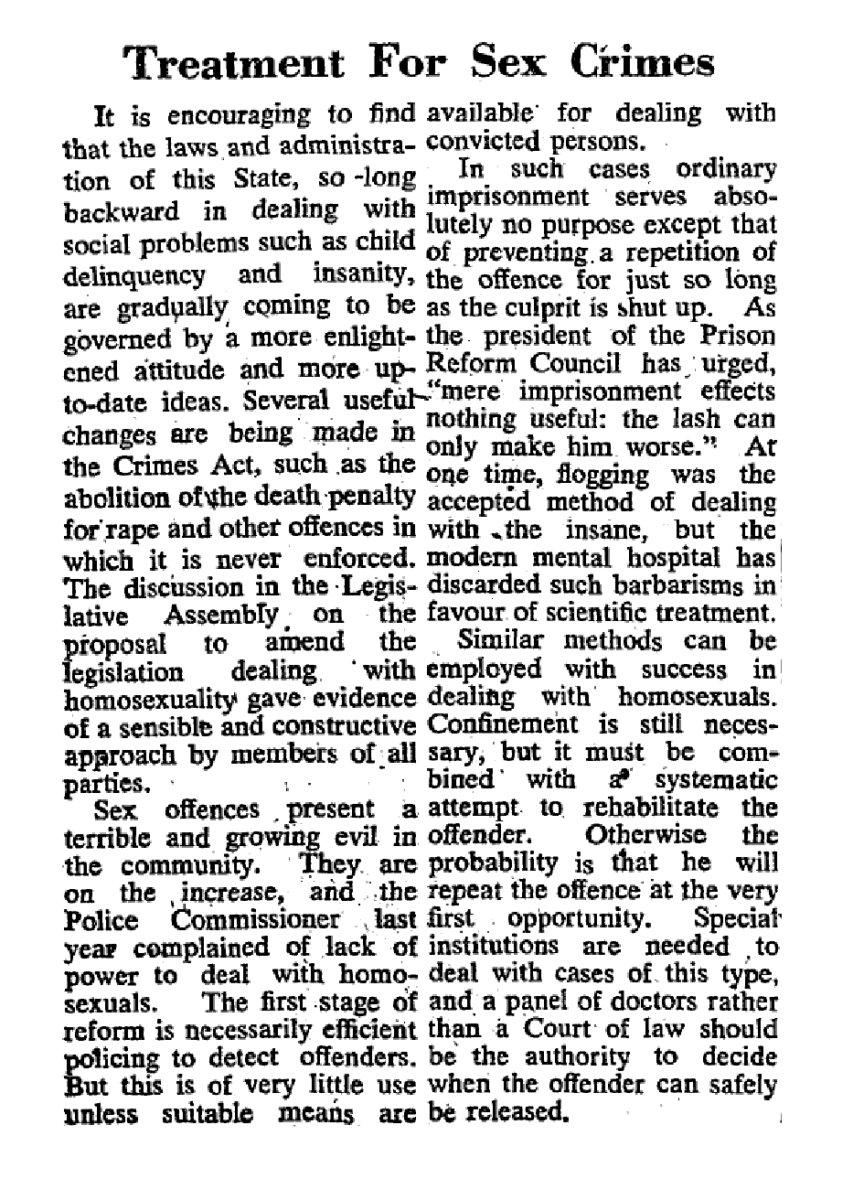The Sydney Morning Herald was to make itself notorious in the 1970s for its implacable hostility to the newly emerging gay and lesbian movement. Oddly, though, it was in this newspaper that the first editorial regarding homosexuality appeared that presented in any way a sympathetic slant.
In 1955, the NSW parliament had been discussing the ‘homosexual problem’ and were planning on beefing up the laws to make it easier for the police to prosecute and for courts to convict. The SMH’s editorialist was all for this – but it also thought that there needed to be something done about dealing with the homosexuals after their arrest and conviction.
Sex offences presented ‘a terrible and growing evil in the community’, to be sure, but ordinary imprisonment was of no use. Nor were harsher penalties likely to be helpful, although in the past it had of course been common to employ flogging or the lash.
The solution, the SMH opined, was ‘treatment’. Homosexuality was a form of insanity. Confinement was necessary, but it needed to be combined with ‘scientific treatment … a systematic attempt to rehabilitate the offender’. Upon conviction, homosexuals would be confined to special institutions until such time as a panel of doctors decided they were fit to be released.
Not exactly the rallying cry of gay liberation, but in the climate of the time rather remarkably enlightened. And the Director of the Father Son Welfare Movement was moved to write in offering his support – indeed, implying, at least, that decriminalisation might be a better option still.



